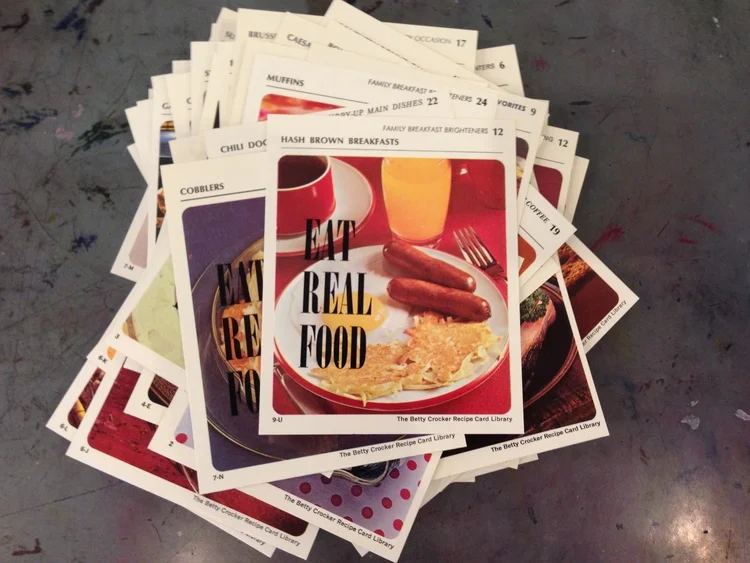Breakfast, Dairy Free, Dessert, Fall, Gluten Free, Home & Family, Snack, Video, Winter
Snack
Breakfast, Dairy Free, Dessert, Fall, Gluten Free, Snack
Maple Butter
Looking for a new treat to spread on your morning toast? Want a wicked spoonful to stir into your cup of coffee? What if I told you there was a way to make maple syrup so thick that it wouldn't run off your waffles and pancakes? Well friends, the wait is over. With little more than some basic chemistry knowledge you'll be able to work magic in the kitchen with a bottle of maple syrup. Get ready, because this is your new addiction.
Dairy Free, Dessert, Fall, Gluten Free, Home & Family, Snack, Spring, Summer, Video
Home & Family: Dry Ice Soft Serve
Dairy Free, Dessert, Fall, Gluten Free, Home & Family, Snack, Spring, Summer
Chocolate Coconut Soft Serve
Want the secret to a killer party trick? Buy a pound of dry ice and make your guests instant soft serve ice cream after dinner, then toss your hair over your shoulder and say, "Oh, this? It's nothing." Dry ice is frozen carbon dioxide and reaches dangerously low temperatures (-109 degrees!), which is perfect for making icy desserts.
Dairy Free, Dessert, Fall, Gluten Free, Home & Family, Side, Snack, Spring, Summer, Winter
Rock Candy
I'm a sucker for candy, particularly candy of the sucking variety. Though to be honest, when I'm presented with a stick of rock candy I am much more likely to crunch its crystals to smithereens than delicately decay them with saliva. There is something so terribly pleasing about the obliteration of sugar between teeth.
Breakfast, Dairy Free, Drink, Fall, Gluten Free, Home & Family, Snack, Spring, Summer, Winter
Homemade Gatorade
Breakfast, Dairy Free, Drink, Fall, Gluten Free, Home & Family, Read, Snack, Spring, Summer, Winter
Electrolyte Science
Breakfast, Dairy Free, Dessert, Dinner, Dinner Party Theater, Fall, Gluten Free, Home & Family, Snack, Side, Summer, Video
Home & Family: Mealy Fruit
Breakfast, Dairy Free, Dessert, Dinner, Dinner Party Theater, Drink, Fall, Gluten Free, Home & Family, Meat, Side, Snack, Spring, Summer, Veggies, Video, Winter
Home & Family: Nomiku Sous Vide
Dairy Free, Dessert, Fall, Gluten Free, Home & Family, Side, Snack, Spring, Summer, Winter
Candied Lemon Peel
This is not a new trick, it is simply good, old, cooking at its best. When we slowly replace water content in food with sugar we act to reduce the amount of H2O necessary to support the growth of bacteria and microbes. Which is to say, we preserve the food. Sugar is a most excellent prison for your lemons. Keep them alive far past their due date with this solution.
Drink, Dinner, Dessert, Breakfast, Dairy Free, Fall, Home & Family, Snack, Spring, Summer, Video, Winter
Home & Family: Coffee Roasting
Breakfast, Dessert, Dinner, Fall, Gluten Free, Home & Family, Side, Snack, Spring, Summer, Winter, Video
Home & Family: Butter Shake
Breakfast, Dessert, Dinner, Fall, Gluten Free, Home & Family, Side, Snack, Spring, Summer, Veggies, Winter, Read
Fresh Butter
Home & Family: Popcorn Physics
Chicken Fat Chili Lime Popcorn
Dairy Free, Dessert, Side, Snack
Cocoa Puff Popcorn
Breakfast, Dairy Free, Dessert, Dinner, Fall, Gluten Free, Side, Snack, Spring, Summer, Video, Winter
Home & Family: Kitchen Hacks
Dessert, Snack, Winter, Summer, Spring, Fall
Mistake Cake
Breakfast, Dairy Free, Dessert, Dinner, Drink, Fall, Gluten Free, Side, Snack, Spring, Summer, Veggies, Winter, Read
Kitchen Swaps
The cold sweat that drips down your neck when you realize you're missing an ingredient, and the cake batter is halfway finished, is real. You have guests scheduled to arrive in mere hours, nay, minutes. Do you rush to the store and grab a bundt cake shelled in plastic? Oh no, not here. NEVER ACCEPT DEFEAT.

